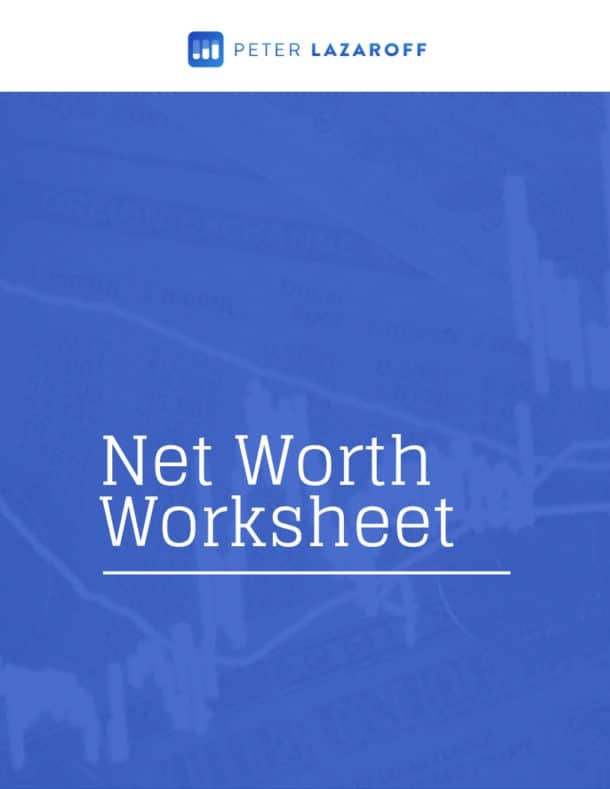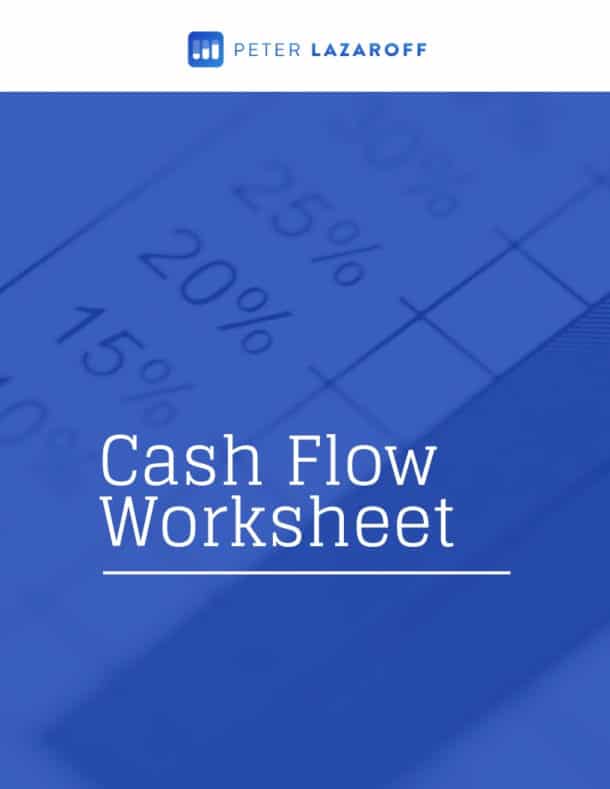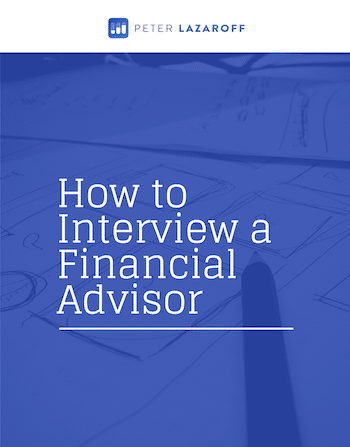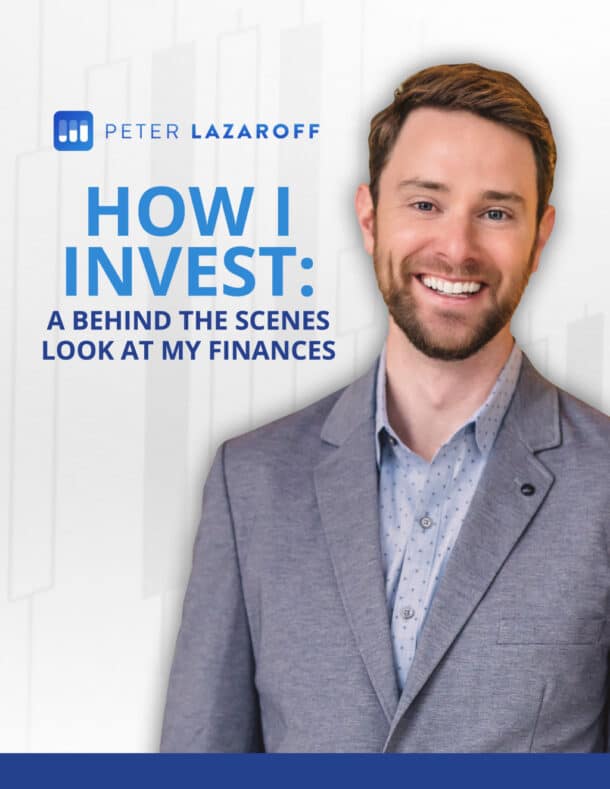Watch Now
Listen Now
In this episode, I speak with Dan Rasmussen, author of The Humble Investor, about the often-overlooked power of humility in investment strategy. We kick off the conversation by unpacking the core premise of the book: that humility isn’t weakness—it’s a superpower in a world where overconfidence, herd behavior, and the illusion of control often lead investors astray.
Sign up for my newsletter so you can easily reply to my emails with your thoughts or questions for the podcast:
Why We Misread the Future: Forecasting, Volatility, and the Illusion of Precision (00:46)
A critical theme from The Humble Investor is our persistent overconfidence in forecasting and how that flawed belief fuels market volatility.
Our brains use the same mechanisms for memory and prediction. Just as our ancestors returned to the same spring or hunting grounds based on past experience, modern investors instinctively rely on historical data to anticipate future outcomes. But that approach creates a behavioral trap in which many investors fall into the same patterns, failing to consider that others are using the same data, models, and narratives. The result is systemic mispricing.
This behavioral blind spot is connected to one of the most famous critiques of market efficiency: Robert Shiller’s theory of excess volatility. According to Shiller, only 5–20% of market price changes can be explained by future fundamentals. The rest—80–95%—comes from something else entirely. But what?
Multiple futures are always possible, and at any given time, different market participants hold divergent but rational expectations based on the same information. That’s why two investors can disagree—about inflation, interest rates, elections, tariffs—and both be “right,” at least in the moment. The market only reconciles those conflicting views when time passes and reality selects one outcome. Everyone else, having made forecast errors, must quickly reassess and reprice—triggering volatility.
The key insight here is that volatility is not just noise or emotion. It’s the byproduct of many rational investors making different bets about an unknowable future. Dan notes that “forecast error” is oddly absent from most economics textbooks, yet it’s arguably the most important concept for understanding markets. Forecasting isn’t just difficult—it’s structurally flawed. And the constant revision of wrong assumptions is what makes markets swing.
This perspective is essential for anyone navigating financial markets: forecasting is part of the game, but humility about its limitations is what keeps you grounded. Volatility is not proof that markets are broken—it’s evidence that everyone is learning in real time.
How Humility Improves Investment Models and Decision-Making (09:06)
Dan explains that humility isn’t just a virtue—it’s a practical edge. Especially in quantitative investing, recognizing the limits of forecasting leads to better decision-making and fewer behavioral traps.
Philip Tetlock’s seminal research on expert forecasting found that professionals—despite their credentials—were no better at predicting outcomes than educated amateurs. In fact, experts often performed worse because they were more confident in their predictions. Tetlock’s work challenges the idea that deep domain knowledge necessarily leads to better forecasts. For Dan, this underscores a key principle: abandon the illusion of precision and instead embrace base rates and historical probabilities.
This belief directly influences how his hedge fund invests. Rather than building elaborate narratives about individual companies or relying on forecasting wizardry, Dan and his team use systematic, evidence-based models rooted in historical data. He likens this approach to estimating the timeline of a kitchen renovation: if a contractor says a job will take four months, but their last ten similar projects averaged 17 months, you’d be wise to bet on the longer timeline. That’s base rate thinking—and it’s more reliable than gut instincts or polished predictions.
In the world of investing, rather than trying to determine which stock will outperform based on qualitative analysis, he evaluates broad characteristics—like valuation, quality, or momentum—and looks at how those traits have historically predicted outcomes across thousands of securities. He’s not claiming to know the future; he’s betting on statistical tendencies that have repeated over time.
Dan’s advice is clear: stop pretending you can predict the future with pinpoint accuracy. Ditch the seductive spreadsheets. And instead, lean into data, probabilities, and the power of knowing what you don’t know. That’s how humility becomes a durable investment advantage.
The Real Reason Value Investing Works—And When It Doesn’t (13:39)
Dan challenges the conventional wisdom behind value investing by reframing it not as a bet on intrinsic worth, but as a contrarian wager against consensus optimism. At its core, he argues, valuation is not an objective truth—it’s a reflection of market sentiment. A high valuation signals widespread enthusiasm about a company’s future, while a low valuation reflects widespread doubt or pessimism.
This distinction matters because the future is inherently unpredictable. When you pay a high price for a stock, you’re implicitly buying into a forecast—one that often assumes strong growth, high returns, or other favorable developments. But if the future doesn’t unfold as expected—and it often doesn’t—the price you paid turns out to be too high.
Conversely, cheap stocks—those with low valuation multiples—are typically priced for failure. Expectations are low, and in many cases, the company is genuinely facing challenges. But because those negative outcomes are already baked into the price, any positive surprise—even a less-bad-than-feared earnings report—can lead to strong returns.
But Dan is quick to caution that value stocks don’t “consistently” outperform. Instead, he prefers to say they “tend to” outperform over the long term—acknowledging that periods of underperformance can last years, even a decade or more. One reason for this inconsistency is that investor expectations sometimes prove accurate. When a highly valued company continues to beat expectations, growth investors win. But when high hopes are dashed, the fallout is painful.
In short, value investing works not because it’s always right, but because the market often prices in too much certainty. When you recognize how fragile those forecasts really are, betting on pessimism—on lower expectations—can become a powerful and repeatable strategy. Just don’t expect it to work every year, and don’t be surprised when periods of exuberance temporarily drown out the logic of valuation.
Why Value Investing Struggled in the U.S.—But Not Abroad (19:25)
Outside of the United States, particularly in developed international markets, value investing has continued to deliver results. In fact, when comparing small-cap value indices internationally against broader large-cap benchmarks, value has outperformed in many regions. It’s only in the U.S. where value has lagged so dramatically.
So, what makes the U.S. so special? According to Dan, it’s the scale and concentration of technological innovation. Over the past two decades, the U.S. has undergone a transformation on par with the Industrial Revolution or the Renaissance—anchored by breakthroughs like cloud computing, mobile technology, artificial intelligence, and the internet. These aren’t just improvements in efficiency—they’ve reshaped entire industries, business models, and ways of life.
The market, recognizing the seismic impact of these technologies, rewarded the companies at the center of this shift—particularly U.S.-based large-cap tech firms—with soaring valuations. And in this rare instance, Dan argues, the market wasn’t wrong. The consensus optimism wasn’t excessive; it was actually underestimating the depth of the transformation. In a world where companies like Apple, Amazon, Google, and Microsoft changed the fabric of the global economy, traditional value investing—buying boring industrials at single-digit P/E ratios—struggled to keep up.
Dan compares what Silicon Valley is to technology is what Vienna was to classical music in the 18th century, or Florence to Renaissance art. These moments in time are powerful, creative inflection points that drive outsized results—but they are also rare and geographically concentrated. Just as we wouldn’t expect another Mozart or Michelangelo every decade, we shouldn’t assume that the conditions that fueled U.S. tech dominance will repeat in the near future—or appear in other regions.
He also underscores the mistake of extrapolating from these rare events. Investors often assume that the recent past is prologue, but Dan encourages a more skeptical view. He believes we are more likely to revert to a “normal” environment going forward—one without runaway tech returns or once-in-a-generation innovation booms.
Meanwhile, international markets haven’t experienced the same degree of technological disruption. As a result, they’ve been more “normal”—and in those normal environments, value investing continues to work as it historically has. This makes a strong case for global diversification, especially for investors clinging too tightly to U.S. growth stocks.
The Case for Geographic Diversification and Caution on Emerging Markets (24:29)
As the performance gap between U.S. and non-U.S. equities widened over the past decade, many investors began to ask whether diversification was still worth it.
Dan frames diversification as a bet against hubris. No one knows which region, sector, or economy will lead over the next decade. Geographic diversification, then, is a form of intellectual humility—an acknowledgment that the future is unknowable, and that putting all your capital in one market, even one as dominant as the U.S., exposes you to concentrated risks you can’t anticipate.
While international developed markets may offer a sound case for diversification, Dan cautions that emerging markets—especially China—come with additional layers of risk. The biggest concern, in Dan’s view, is the lack of secure property rights. Without strong legal protections, investors’ claims to assets and future cash flows are vulnerable. He points out that China, despite various reforms, is still governed by a Communist regime with a murky commitment to the rule of law. While it may appear that property rights exist on paper, in practice they are fragile and subject to political interference.
Investing without reliable property rights is fundamentally different—it’s more speculative than long-term. And beyond legal concerns, geopolitical risks also loom large. Trade barriers, capital controls, and military tensions can all undermine foreign investors’ ability to access, exit, or repatriate capital from certain regions. Dan even jokes that he prefers to invest in countries where the U.S. has a military presence—it may sound flippant, but it underscores a real consideration: political alignment and national security relationships matter when your ownership rights are on the line.
Ultimately, Dan’s view isn’t that emerging markets should be avoided entirely. Instead, they should be approached with caution and positioned within a well-diversified portfolio. He emphasizes the importance of sizing appropriately, avoiding narrative-driven overexposure, and recognizing when certain markets carry systemic, non-market risks that aren’t reflected in the data.
The Risks of Overallocating to Private Equity (30:46)
Dan delivers a sobering assessment of private equity, arguing that many institutional and individual investors have taken their exposure to the asset class too far—and are now facing the consequences. What began as a promising strategy modeled on the success of elite endowments like Yale’s has, in Dan’s view, become a widespread and costly misapplication of the “endowment model.”
Dan begins by acknowledging a shift in his own critique. In years past, he argued that while historical returns for private equity had been attractive, future returns were unlikely to be as strong given rising valuations and massive inflows of capital. Today, however, he doesn’t have to speculate about future underperformance—it’s already here. Over the past one, three, and five years, private equity has lagged public markets. The value proposition has eroded, even as the illiquidity and fee structures have remained firmly in place.
And those fees are significant. Between management fees and performance-based carry, many investors are effectively paying 4% to 6% annually for the privilege of locking up capital for 10–12 years. When those investments fail to outperform public markets—especially low-cost index funds—the opportunity cost becomes hard to ignore.
Dan explains that the flood of capital into private equity has created a distorted ecosystem. Valuations were pushed higher, competition for deals intensified, and increasingly, investors began pouring money into companies that are often too small and too levered to thrive in public markets. As more and more money chased a limited number of opportunities, the underlying fundamentals deteriorated. Private equity became a victim of its own popularity.
This dynamic also created a “greater fool” effect: early investments could be sold to newer, larger funds flush with capital, even if the underlying businesses weren’t especially attractive. But as fundraising has slowed and capital flows have reversed, the illusion of liquidity has broken down. Suddenly, those who were eager to exit their positions are finding no buyers. Liquidity mismatches have come to the surface, and distributions—the cash returned to investors—have dried up.
Despite the criticisms, Dan doesn’t seem to believe that private equity is inherently flawed, but right now her clearly feels it’s a bad bet because the math no longer works, the exit environment is deteriorating, and the risks are magnified by crowding and leverage.
The Danger Behind Private Credit’s Appeal (36:14)
Dan delivers a clear and urgent warning about the growing allure of private credit—an asset class that’s seen a surge in popularity thanks to its promise of higher yields and seemingly stable returns. But beneath the surface, Dan argues, the dynamics of private credit resemble the same patterns that led to past financial crises. It’s not just a bubble in the making—it’s a case study in how investor psychology can override prudent risk management.
A basic truth often overlooked is that yield is not the same as return. High-yield investments can be tempting, especially in a low-interest-rate environment or following a period of stock market volatility. But as Dan explains, markets are generally efficient, particularly in credit. If a security offers a higher yield, it’s almost always because it comes with higher risk—most notably, the risk of default.
This is where many investors go astray. They assume that a 10–12% yield in private credit must equate to an equivalent return, ignoring the fact that some of those borrowers won’t pay them back. And when defaults do come, they don’t arrive gradually—they arrive in waves, often triggered by macroeconomic stress, rising rates, or tightening credit conditions. As Dan puts it, “bankruptcy comes in cycles.”
What makes private credit especially concerning today, he argues, is the underlying quality of the loans being made. These aren’t loans to well-established, cash-generating businesses. Instead, they’re often made to small, highly leveraged companies that would struggle to access traditional credit markets. Many of them are backed by private equity sponsors who are themselves facing liquidity issues—creating a potential domino effect if the economic backdrop weakens.
Dan also raises red flags about how these loans are being rated. While public credit markets rely on the likes of Moody’s and S&P—agencies with decades of experience and relatively well-calibrated models—private credit has turned to second-tier firms. He references one rating agency that operates out of a Philadelphia townhouse with a tiny staff—and yet somehow manages to rate tens of thousands of private credit instruments annually. Unsurprisingly, the vast majority of these securities are rated “investment grade,” even though their yields suggest far more risk.
This, Dan says, is eerily reminiscent of the pre-2008 mortgage market, where AAA ratings were slapped on securities that later turned out to be toxic. Once again, investors are mistaking paper ratings for genuine credit quality, and they’re overexposed to products that could collapse when the economic tide turns.
Adding to the concern is the narrative being sold—particularly by financial advisors. The pitch is compelling: higher yield, less volatility, uncorrelated returns. But as Dan cautions, much of this narrative depends on the illusion of stability. Illiquidity doesn’t eliminate risk—it simply hides it. Just because the price doesn’t move every day doesn’t mean the value is stable.
He concludes by reminding us that this story isn’t new. We’ve seen it before: the savings and loan crisis, the mortgage-backed securities collapse, and various waves of speculative lending followed by painful credit corrections. Each time, the playbook is the same: capital floods in, underwriting standards fall, and investors are left holding the bag when defaults spike.
Resources:
- Check out Dan’s book, The Humble Investor
The Long Term Investor audio is edited by the team at The Podcast Consultant
Submit Your Question For the Podcast
Do you have a financial or investing question you want answered? Submit your question through the “Ask Me Anything” form at the bottom of my podcast page.
Support the Show
Thank you for being a listener to The Long Term Investor Podcast. If you’d like to help spread the word and help other listeners find the show, please click here to leave a review.
I read every single one and appreciate you taking the time to let me know what you think.
Free Financial Assessment
Do you want to make smart decisions with your money? Discover your biggest opportunities in just a few questions with my Financial Wellness Assessment.

Disclosure: This content, which contains security-related opinions and/or information, is provided for informational purposes only and should not be relied upon in any manner as professional advice, or an endorsement of any practices, products or services. There can be no guarantees or assurances that the views expressed here will be applicable for any particular facts or circumstances, and should not be relied upon in any manner. You should consult your own advisers as to legal, business, tax, and other related matters concerning any investment.
The commentary in this “post” (including any related blog, podcasts, videos, and social media) reflects the personal opinions, viewpoints, and analyses of the Plancorp LLC employees providing such comments, and should not be regarded the views of Plancorp LLC. or its respective affiliates or as a description of advisory services provided by Plancorp LLC or performance returns of any Plancorp LLC client.
References to any securities or digital assets, or performance data, are for illustrative purposes only and do not constitute an investment recommendation or offer to provide investment advisory services. Charts and graphs provided within are for informational purposes solely and should not be relied upon when making any investment decision. Past performance is not indicative of future results. The content speaks only as of the date indicated. Any projections, estimates, forecasts, targets, prospects, and/or opinions expressed in these materials are subject to change without notice and may differ or be contrary to opinions expressed by others.
Please see disclosures here.
















